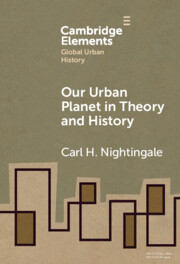Element contents
Our Urban Planet in Theory and History
Published online by Cambridge University Press: 14 May 2024
Summary
- Type
- Element
- Information
- Series: Elements in Global Urban HistoryOnline ISBN: 9781009321778Publisher: Cambridge University PressPrint publication: 30 June 2024



